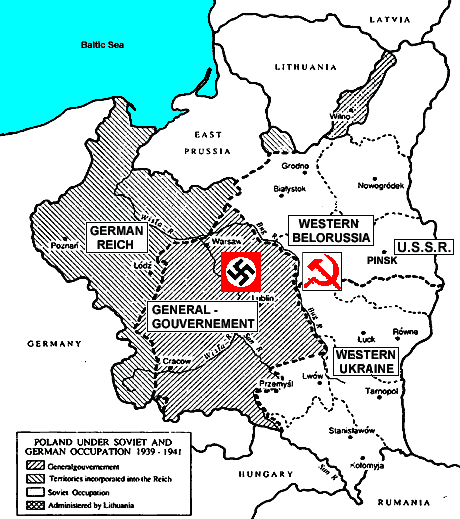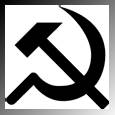| |
- Rymaszewski Adam ,
the son of Stanislaw, born in 1905, deported
from Baranowicze district (Karta id.
192345)
- Rymaszewski Adam ,
the son of Julian, born in 1892, deported
to Vologoda district (Karta id. 217541)
- Rymaszewski
Adolf , the son of Adam, born in 1919, arrested
in (Karta id. 82879)
- Rymaszewski Aleksander
, the son of Adam, born in 1900, arrested
(Karta id. 48404)
- Rymaszewski Aleksander
, the son of Aleksander, born in 1911, arrested
(Karta id. 57514, 160225)
- Rymaszewski Aleksander
, the son of Aleksander, born in 1911, arrested
in Bel (Karta id. 244360)
- Rymaszewski Anatol
, the son of Antoni, born in 1910, sent to Vorkuta-2
gulag (Karta id. 147538)
- Rymaszewska Anna ,
the daughter of Konstanty, born in 1930, deported
from Baranowicze district (Karta id.
192326)
- Rymaszewska Anna ,
the daughter of Pawel, born in 1899, deported
from Baranowicze district (Karta id.
192325)
- Rymaszewski Antoni
, the son of Romuald, born in 1902, executed
in Kozielsk (Karta id. 3286)
- Rymaszewski Antoni
, the son of Piotr, born in 1913, executed
in Starobielsk (Karta id. 7208)
- Rymaszewski Antoni
, the son of Józef, born in 1900, deported
from Nieswiez, Baranowicze district (Karta
id. 192346)
- Rymaszewska Barbara
, the daughter of Bogdan, born in 1940, deported
Vologoda district (Karta id. 217540)
- Rymaszewska Bernarda
, the daughter of Adam, born in 1935, deported
Vologoda district (Karta id. 217538)
- Rymaszewski Bogdan
, the son of Boleslaw, born in 1927, deported
from Baranowicze district (Karta id.
192347)
- Rymaszewski Bogdan
, the son of Pawel, born in 1904, deported
to Vologoda district (Karta id. 217542)
- Rymaszewski
Boleslaw , the son of Stanislaw, born in 1897,
deported from Baranowicze district
(Karta id. 192348)
- Rymaszewski Czeslaw
, the son of Hipolit, born in 1912, arrested
in (Karta id. 55423)
- Rymaszewski Czeslaw
, the son of Boleslaw, born in 1897, state forest
ranger, executed in prison in 1944-45? (Karta
id. - not listed)
- Rymaszewska Danuta
, the daughter of Stanislaw, born in 1936, deported
from Baranowicze district (Karta id.
192327)
- Rymaszewska Danuta
, the daughter of Franciszek, born in 1936, deported
from Brest district (Karta id. 226462)
- Rymaszewski Dominik
, the son of Dominik, born in 1904, arrested
in (Karta id. 85480)
- Rymaszewski Edward,
the son of Michal, born in 1918, post office employee,
sent to Vorkuta gulag (Karta id. 50750)
- Rymaszewski Edward,
the son of Adam, born in 1925, deported
to Vologoda district (Karta id. 217543)
- Rymaszewska Elzbieta,
the daughter of Waclaw, born in 1939, deported
from Baranowicze district (Karta id.
192328)
- Rymaszewska Emilia,
the daughter of Franciszek, born in 1902, deported
Vologoda district (Karta id. 217534)
- Rymaszewski Eugeniusz,
the son of Franciszek, born in 1935, deported
from Baranowicze district (Karta id.
192349)
- Rymaszewski Eugeniusz,
the son of Bogdan, born in 1925, deported
to Vologoda district (Karta id. 217544)
- Rymaszewski Franciszek,
the son of Jan, born in 1888, executed
in Ostaszkow (Karta id. 12925)
- Rymaszewski Franciszek,
the son of Florian, born in 1905, arrested
Bel (Karta id. 85313)
- Rymaszewska Franciszka,
the daughter of Adam, born in 1934, deported
from Baranowicze district (Karta id.
192329)
- Rymaszewska Helena,
the daughter of Adam, born in 1873, deported
from Baranowicze district (Karta id.
192330)
- Rymaszewska Idalia,
the daughter of Jozef, born in 1913, deported
from Baranowicze district (Karta id.
192331)
- Rymaszewski Jadwiga,
the daughter of Adam, born in 1929, deported
from Baranowicze district (Karta id.
192332)
- Rymaszewska Jadwiga,
the daughter of Bogdan, born in 1927, deported
to Vologoda district (Karta id. 217536)
- Rymaszewski Jan, the
son of Piotr, born in 1914, arrested
in (Karta id. 53456, 160226)
- Rymaszewski Jan,
the son of Wincenty, born in 1907, deported
from Brest district (Karta id. 231134)
- Rymaszewski Jan,
the son of Piotr, born in 1914, arrested
in Bel. (Karta id. 244361)
- Rymaszewska Janina,
the daughter of Adam, born in 1927, deported
from Baranowicze district (Karta id.
192333)
- Rymaszewska Janina,
the daughter of Franciszek, born in 1933, deported
from Baranowicze district (Karta id.
192334)
- Rymaszewska Janina,
the daughter of Jozef, born in 1911, deported
from Baranowicze district (Karta id.
192335)
- Rymaszewska Janina,
the daughter of Bogdan, born in 1923, deported
to Vologoda district (Karta id. 217535)
- Rymaszewski Jozef,
the son of Waclaw, born in 1937, deported
from Baranowicze district (Karta id.
192350)
- Rymaszewski Jozef,
the son of Jan, born in 1940, deported
from Brest district (Karta id. 227499)
- Rymaszewska Jozefa,
the daughter of Wincenty, born in 1892, deported
to Vologoda district (Karta id. 217533)
- Rymaszewski Kasper,
the son of Adam, born in 1892, executed
in Starobielsk (Karta id. 7209)
- Rymaszewski Konstanty,
the son of Ignacy, born in 1899, deported
from Baranowicze district (Karta id.
192351)
- Rymaszewska Leonarda,
the daughter of Jozef, born in 1911, deported
from Brest district (Karta id. 228237)
- Rymaszewska Lucja,
the daughter of Bogdan, born in 1930, deported
to Vologoda district (Karta id. 217537)
- Rymaszewska Maria,
the daughter of Adam, born in 1931, deported
from Baranowicze district (Karta id.
192336)
- Rymaszewska Maria,
the daughter of Franciszek, born in 1913, deported
from Baranowicze district (Karta id.
192337)
- Rymaszewska Maria,
the daughter of Klemens, born in 1904, deported
from Baranowicze district (Karta id.
192338)
- Rymaszewski Michal,
the son of Aleksander, born in 1894, public servant,
executed in Minsk prison in 1940-41?(Karta
id. - not listed)
- Rymaszewska Michalina,
the daughter of Jan, born in 1870, deported
from Baranowicze district (Karta id.
192339)
- Rymaszewski Mieczyslaw,
the son of Czeslaw, born in 1921, sent to Vorkuta
gulag (Karta id. - not listed. His memoirs
are published on my site. It shows how incompenent Karta is.)
- Rymaszewska Regina,
the daughter of Boleslaw, born in 1935, deported
from Baranowicze district (Karta id.
192340)
- Rymaszewski Stanislaw,
the son of Boleslaw, born in 1922, arrested
in Bel. (Karta id. 67424, 244362)
- Rymaszewski Stanislaw,
the son of Boleslaw, born in 1928, deported
from Baranowicze district (Karta id.
192352)
- Rymaszewski Stanislaw,
the son of Wincenty, born in 1870, deported
from Baranowicze district (Karta id.
192353)
- Rymaszewska Stanislawa,
the daughter of Antoni (Adam?), born in 1908 (1910?),
deported from Nieswiez, Baranowicze
district (Karta id. 192341)
- Rymaszewska Stanislawa,
the daughter of Bronislaw, born in 1909, deported
from Baranowicze district (Karta id.
192342
- Rymaszewska Teresa,
the daughter of Franciszek, born in 1938, deported
from Baranowicze district (Karta id.
192343)
- Rymaszewska Teresa,
the daughter of Bogdan, born in 1935, deported
to Vologoda district (Karta id. 217539)
- Rymaszewski Waclaw,
the son of Wincenty, born in 1910, deported
from Baranowicze district (Karta id.
192354)
- Rymaszewska Wanda,
the daughter of Antoni, born in 1929, deported
from Nieswiez, Baranowicze district (Karta
id. 192344)
- Rymaszewski Wienczeslaw,
the son of Boleslaw, born 1897, POW, executed
(Karta id.30209)
- Rymaszewski Wincenty,
the son of Adam, born in 1894, arrested
in Bel. (Karta id. 85488)
- RymaszewskiWincenty,
the son of Waclaw, born in 1940, deported
from Baranowicze district (Karta id.
192355)
- Rymaszewski Wladyslaw,
the son of Antoni, born in 1891, executed
in Starobielsk (Karta id. 7210)
- Rymaszewski Zenon,
the son of Jan, born in 1910, executed
in Kozielsk (Karta id. 3287)
- Rymaszewski Zygmunt,
the son of Michal, my brother, born in 1920, arrested
in Pinsk, and sent to Vorkutlag gulag.
Died on 4 June 1942, aged 21. (Karta
id.51374, 120197)
|

































 SOVEREIGN
AND DEMOCRATIC REPUBLIC OF POLAND
SOVEREIGN
AND DEMOCRATIC REPUBLIC OF POLAND 











 Our
roots extend to the medieval Kingdom of Poland. The forefathers were
the knights in the Kingdom.
Our
roots extend to the medieval Kingdom of Poland. The forefathers were
the knights in the Kingdom.  They
served with princes and dukes as members of their household military
elite.
They
served with princes and dukes as members of their household military
elite.
 At a later
period our ancestors served as royal guards at the "Wawel"
Kings Court in Cracow, then the capital of Poland.
At a later
period our ancestors served as royal guards at the "Wawel"
Kings Court in Cracow, then the capital of Poland.

 From
the15th century, the ancestors transformed from the medieval
knights - the warriors, to a new social class of landlords, who settled
on landed estates.
From
the15th century, the ancestors transformed from the medieval
knights - the warriors, to a new social class of landlords, who settled
on landed estates. 



 The
woodland estate was located southwest of MINSK, near KOPYL
and river NIEMEN.
The
woodland estate was located southwest of MINSK, near KOPYL
and river NIEMEN.

 Lukasz
(Lukash) was the last member of Zaglobczyk
knightly family. His father, Jan, died soon after the birth
of Lukasz in 1520, his first and only son.
Lukasz
(Lukash) was the last member of Zaglobczyk
knightly family. His father, Jan, died soon after the birth
of Lukasz in 1520, his first and only son. 

 During the subsequent years the family of Gregory
During the subsequent years the family of Gregory






 RYMASZEWSKI
family, like all noble families, had their own family motto
which was placed on their seals and the coat of arms.
It was in Latin: "Tendit ad Astra Viribus" and
meant "Reach up for the stars by your own effort".
RYMASZEWSKI
family, like all noble families, had their own family motto
which was placed on their seals and the coat of arms.
It was in Latin: "Tendit ad Astra Viribus" and
meant "Reach up for the stars by your own effort".








 At
the end of 18th century, after the second and third partitions of Poland
(1793 - 1795), the lands of eastern Poland where the Rymaszewski families
lived, fell under Russian Tsar's rule and became part of the Russian Empire.
At
the end of 18th century, after the second and third partitions of Poland
(1793 - 1795), the lands of eastern Poland where the Rymaszewski families
lived, fell under Russian Tsar's rule and became part of the Russian Empire.
 Many RYMASZEWSKIS
emigrated. Some to France but mostly to the United States of America,
also to Canada and Argentina.
Many RYMASZEWSKIS
emigrated. Some to France but mostly to the United States of America,
also to Canada and Argentina. 
























 The
following Rymaszewskis in the above category are listed below.
They were found among records of KARTA, the Polish Information Center
on the Repression of Polish citizens by the Soviet Union.
The
following Rymaszewskis in the above category are listed below.
They were found among records of KARTA, the Polish Information Center
on the Repression of Polish citizens by the Soviet Union. 



 From:
"Ksiega
Cmentarna Polskiego Cmentarza Wojenego - CHARKÓW"
(Page 463) - Rada Ochrony Pamieci Walk i Meczenstwa - Warszawa
2003
From:
"Ksiega
Cmentarna Polskiego Cmentarza Wojenego - CHARKÓW"
(Page 463) - Rada Ochrony Pamieci Walk i Meczenstwa - Warszawa
2003